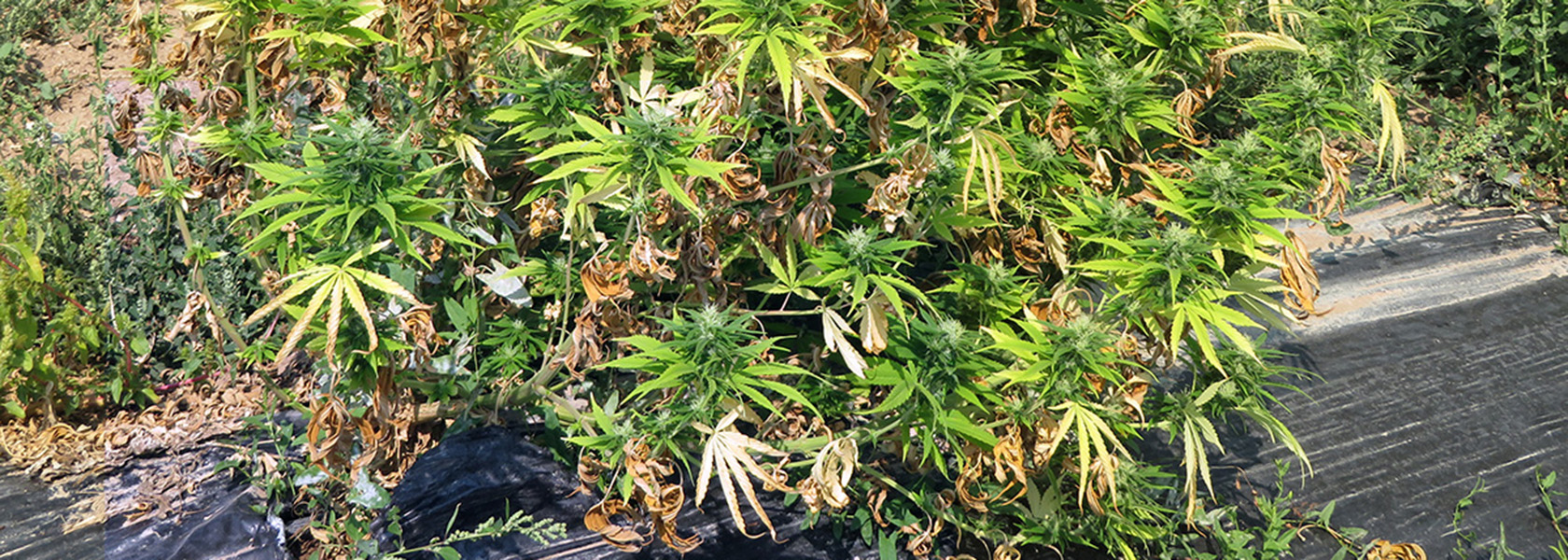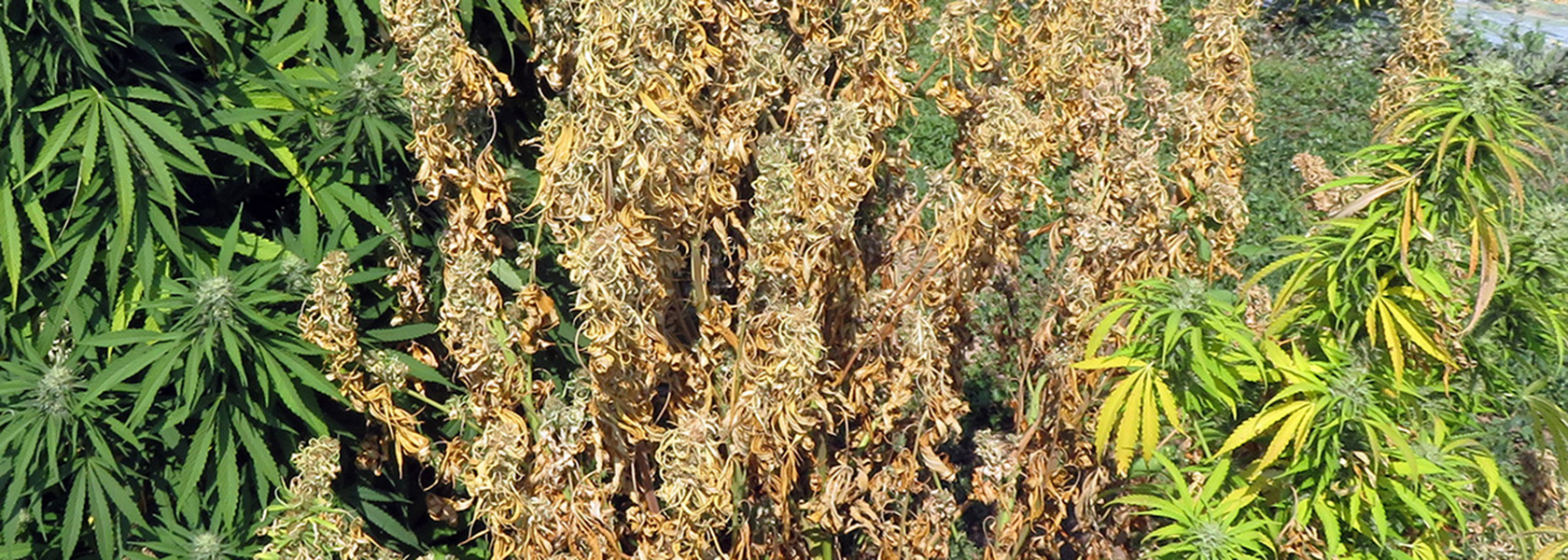Verticillium Wilt
Verticillium dahliae and other Verticillium species
Hosts
- Field-grown hemp
- Raspberries
- Potato
- Tomatoes
- Peppers
- Many ornamental trees, shrubs, and flowers
Symptoms
The initial symptom is wilting during the day with recovery at night. Over time, the lower foliage becomes chlorotic and scorched, with this symptom progressing up the plant until death. The pathogen clogs and kills the vascular (water-conducting) tissue and this symptom can be seen by cutting the stem at the ground, and slicing into the stem lengthwise above the cut to expose the brown tissue.
Disease Cycle
The fungi that cause Verticillium survive as resting spores in the soil for many years or as mycelium in crop debris for a shorter period. When mycelium or resting spores are near the roots of a suitable host, the root exudates cause germination. Infection into the roots requires a tiny wound for entry. After infection, the fungus produces secondary spores (conidia) that travel through and clog the vascular system. This disease spreads under cool, wet soil conditions and can also spread via root-to-root contact.
Time for Concern
Prior to transplanting, investigate the history of the field to determine if Verticillium has been present before (even if on other crops). Infections occur under cool, wet conditions and symptoms appear in hot, dry conditions.
When and Where to Scout
- Examine transplants before transporting them to the field.
- Starting in early summer, examine plants for unusual wilting and for leaf necrosis that starts at the base of the plant.
Threat Level
Low-moderate. Other plant pathogens are observed more frequently in industrial hemp, but growers should note that there is no cure for Verticillium wilt.
Occurrence in Utah
Not yet found as a damaging pest in field-grown hemp. Nevada reports that one grower grew hemp in a field with a history of Verticillium wilt, but no wilt disease was found on hemp. Verticillium was first noted on hemp in China, so it can potentially be an issue; however, Fusarium seems to outcompete other soilborne diseases.
Management
- Do not plant hemp into fields known to have had Verticillium.
- Prevent injury to plant roots during planting and during field maintenance.
- Practice good sanitation and remove diseased plants in a timely manner to prevent spread from plant to plant.
- Where possible, rotate fields out of hemp to other crops.
When to Consider Treatment
There is no treatment to eliminate Verticillium spp. from fields except crop rotation or fallowing the field for several years. Plants diagnosed with the disease cannot be cured and should be removed.
Look-alikes
Fusarium wilt, nutrient deficiencies, and drought stress.
Photo Credits
All photos: USU Extension IPM Program




